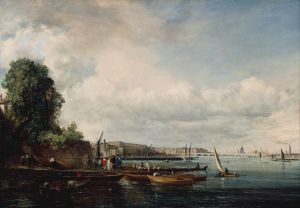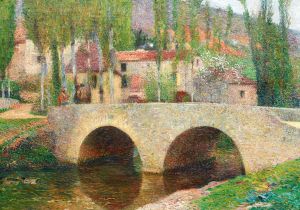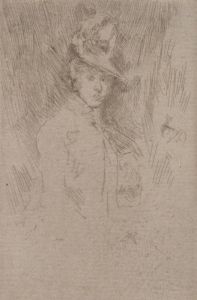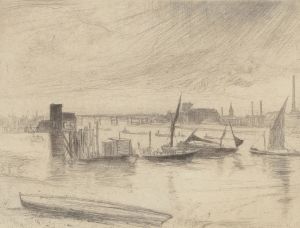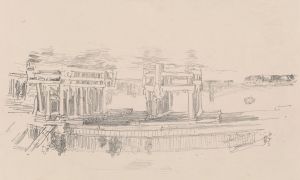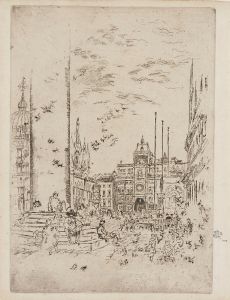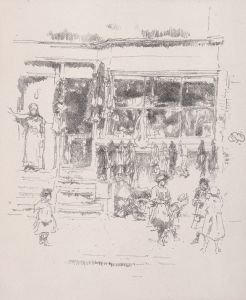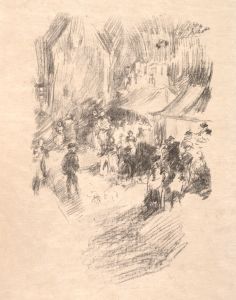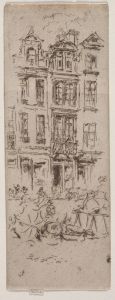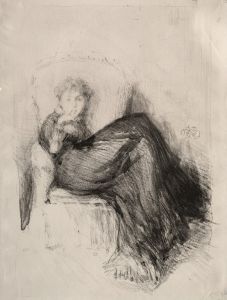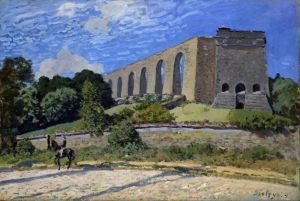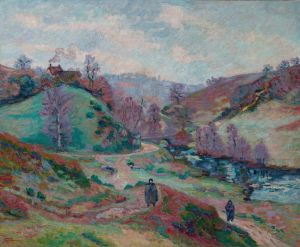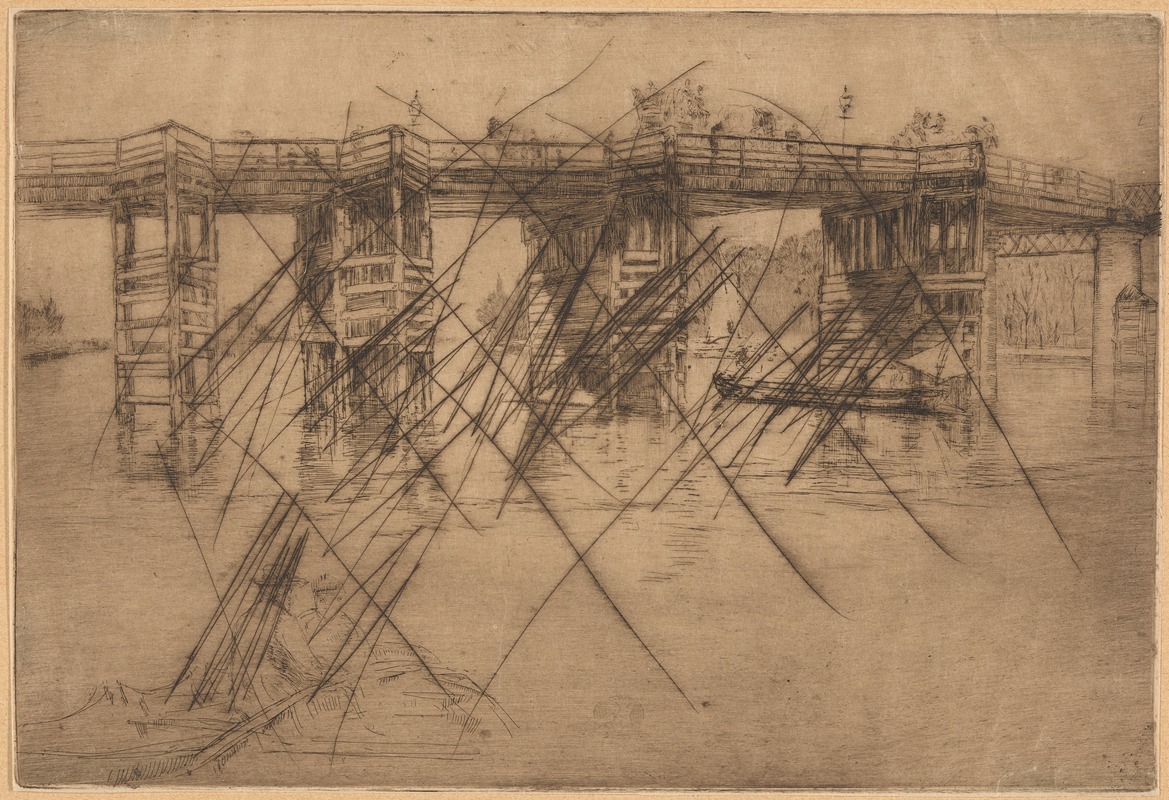
Old Putney Bridge
A hand-painted replica of James Abbott McNeill Whistler’s masterpiece Old Putney Bridge, meticulously crafted by professional artists to capture the true essence of the original. Each piece is created with museum-quality canvas and rare mineral pigments, carefully painted by experienced artists with delicate brushstrokes and rich, layered colors to perfectly recreate the texture of the original artwork. Unlike machine-printed reproductions, this hand-painted version brings the painting to life, infused with the artist’s emotions and skill in every stroke. Whether for personal collection or home decoration, it instantly elevates the artistic atmosphere of any space.
James Abbott McNeill Whistler, an American artist active during the late 19th century, is renowned for his contributions to the art world, particularly in the realms of painting and etching. One of his works, "Old Putney Bridge," exemplifies his skill in capturing the atmospheric qualities of urban landscapes. Whistler's art is often associated with the Aesthetic Movement, which emphasized the visual and sensual qualities of art over narrative content.
"Old Putney Bridge" is an etching created by Whistler, showcasing his adeptness in this medium. Etching, a printmaking technique that involves incising a design onto a metal plate with acid, was one of Whistler's preferred methods for capturing the nuances of light and shadow. This particular work is part of a series of etchings known as the "Thames Set," which Whistler produced in the late 1850s. The series reflects his fascination with the River Thames and its surroundings, capturing the essence of London during this period.
The Old Putney Bridge, depicted in Whistler's etching, was a significant structure in London, connecting the areas of Putney and Fulham. The bridge, originally built in the early 18th century, was a wooden structure that served as a vital crossing over the Thames until it was replaced by a stone bridge in the late 19th century. Whistler's etching captures the bridge in its historical context, offering a glimpse into the architectural and urban landscape of the time.
Whistler's approach to etching was influenced by his admiration for the works of earlier masters such as Rembrandt. He was known for his ability to convey mood and atmosphere through subtle variations in line and tone. In "Old Putney Bridge," Whistler employs these techniques to evoke a sense of tranquility and timelessness, drawing the viewer into the scene with his delicate rendering of the bridge and its surroundings.
The "Thames Set" was instrumental in establishing Whistler's reputation as a leading etcher of his time. These works were well-received by critics and collectors alike, who praised Whistler's ability to capture the spirit of London with such precision and artistry. The etchings from this series, including "Old Putney Bridge," are considered important contributions to the field of printmaking and are held in high regard by art historians and enthusiasts.
Whistler's work, including "Old Putney Bridge," reflects his broader artistic philosophy, which prioritized beauty and harmony over literal representation. His emphasis on composition, tone, and mood can be seen as a precursor to later developments in modern art, influencing movements such as Impressionism and Symbolism.
Today, Whistler's etchings, including "Old Putney Bridge," are housed in various collections and museums around the world. They continue to be studied and appreciated for their technical mastery and their ability to transport viewers to a bygone era. Whistler's legacy as a pioneering artist endures, with his works serving as a testament to his innovative spirit and his profound impact on the art world.





